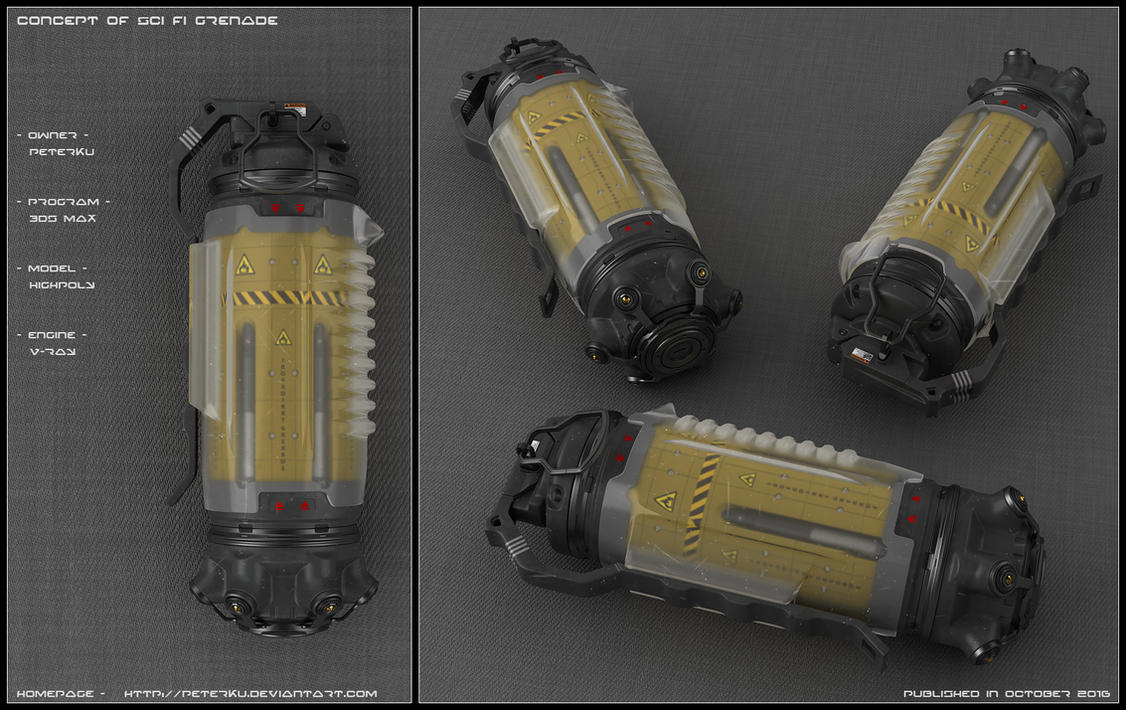Directorate Officer
OUT OF CHARACTER INFORMATION

While at a glance, it appears to be a typical grenade, the Hydra is anything but that. Instead of explosives, the LPD-12 Hydra Electronet Grenade uses a repulsor coil to deploy a omnidirectional web of electrified duracord to stun or electrocute targets. The safety pin is pulled, initiating a five second delay before its proximity fuse is activated. Once something moves around the armed grenade, it explodes into a tangling sphere of electrified duracord. Because the cords are coated in adhesive, they can stick to surfaces to form a three dimensional obstacle or to ensnare their targets. Contact with these conducting cords causes electricity to be dumped into the target, but the specific effects of the grenade on its target is dependent on the power setting. A high current setting rapidly transfers a large amount of energy into the target, capable of electrocuting organic targets or frying personal devices, droids, and other electronical devices. The grenade can also be dialed down to a low setting to slowly discharge a smaller current over a longer period of time. This allows it to be used like a stun net. Hydra can thrown like a tradition hand grenade or fired from a grenade launcher. Hydras are most commonly found in military and police armories, though a handful have appeared in the hands of bounty hunters and scouts who appreciate the ability to capture an organic target relatively undamaged.

- Intent: To make a hand-thrown variant of the canon Electronet Grenade
- Image Source: Sci-fi Grenade Concept by peterku
- Canon Link: N/A
- Restricted Missions: N/A
- Primary Source: N/A
- Manufacturer: Lucerne Personal Defense
- Model: LPD-12 Hydra Electronet Grenade
- Affiliation: Silver Jedi, Galactic Alliance, Outer Rim Coalition, Republic Remnant, Closed-Market
- Modularity: No
- Production: Mass-Produced.
- Material: Duracord, Repulsor Coil, proximity fuse, power cell
- Classification: Grenade
- Size: Small
- Weight: Light
- Ammunition Type: electrified Duracord strands
- Ammunition Capacity: 1
- Reload Speed: Very Low (none)
- Effective Range: Personal
- Rate of Fire: Low
- Stopping Power: Very High
- Recoil: None
- Web Explosion: When Hydras detonate, they throw out omni-directional web of electrified duracord strands. The cords are covered in a strong adhesive, allowing them to maintain a web-shaped form or stick to their target.
- Proximity Detonation: Hydras use a proximity fuse, meaning that something must move in order to trigger them. This also means that they can be thrown or placed like a mine. Electricity is discharged from the grenade into the target based on physical contact.
- Low / High Setting: The amount of voltage in the cords can be set to low or high depending on the desired effect.
- High Voltage: Hydras can discharge a high amount of electrical power in a very short amount of time, making it capable of dealing grievous and sometimes fatal injuries to organics or frying electronic components.
- Trap: The ends of the duracord are coated in adhesive, allowing it to stick to walls and other objects to act as an obstacle. Combined with the proximity sensor, this can make it use trap or obstacle.
- Variable Charge: The amount of current in the duracord can be adjusted by the user. A high voltage setting produces a very brief but large amounts of electrical power to inflict maximum damage on its targets. But it could also be set to a low current which can stun opponents or cause dehabilitating muscle spasms. In this mode, the Hydra slowly uses up its power, with enough charge to typically last a full minute of continuous use.
- Indiscriminate: Hydras are indiscriminate weapons, especially on their proximity setting, meaning that they're just as likely to effect a friendly assets as negative assets in close-quarters combat, or if a friendly stumbles upon one laid down as a trap.
- Delayed Reaction: Hydras have a five second gap once they leave the user's hand before they activate. This is in order to ensure that the grenade doesn't explode in the immediate presence of the user, but it can also give opponents an opening to slip past or avoid the grenade.
- Small Area of Effect: Compared to many grenades and other munitions, the Hydra has a relatively small area of effect.
While at a glance, it appears to be a typical grenade, the Hydra is anything but that. Instead of explosives, the LPD-12 Hydra Electronet Grenade uses a repulsor coil to deploy a omnidirectional web of electrified duracord to stun or electrocute targets. The safety pin is pulled, initiating a five second delay before its proximity fuse is activated. Once something moves around the armed grenade, it explodes into a tangling sphere of electrified duracord. Because the cords are coated in adhesive, they can stick to surfaces to form a three dimensional obstacle or to ensnare their targets. Contact with these conducting cords causes electricity to be dumped into the target, but the specific effects of the grenade on its target is dependent on the power setting. A high current setting rapidly transfers a large amount of energy into the target, capable of electrocuting organic targets or frying personal devices, droids, and other electronical devices. The grenade can also be dialed down to a low setting to slowly discharge a smaller current over a longer period of time. This allows it to be used like a stun net. Hydra can thrown like a tradition hand grenade or fired from a grenade launcher. Hydras are most commonly found in military and police armories, though a handful have appeared in the hands of bounty hunters and scouts who appreciate the ability to capture an organic target relatively undamaged.







